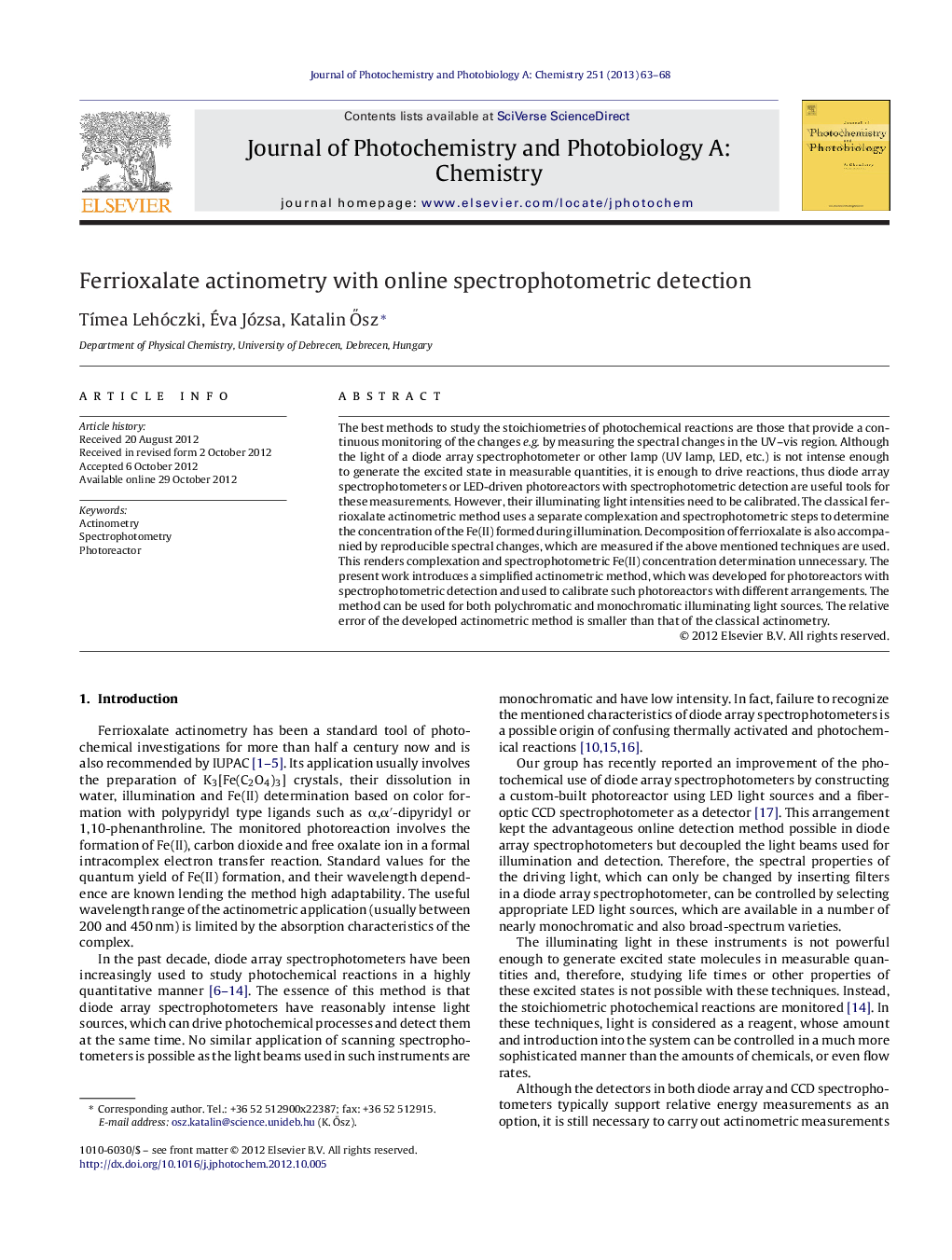| Article ID | Journal | Published Year | Pages | File Type |
|---|---|---|---|---|
| 26156 | Journal of Photochemistry and Photobiology A: Chemistry | 2013 | 6 Pages |
The best methods to study the stoichiometries of photochemical reactions are those that provide a continuous monitoring of the changes e.g. by measuring the spectral changes in the UV–vis region. Although the light of a diode array spectrophotometer or other lamp (UV lamp, LED, etc.) is not intense enough to generate the excited state in measurable quantities, it is enough to drive reactions, thus diode array spectrophotometers or LED-driven photoreactors with spectrophotometric detection are useful tools for these measurements. However, their illuminating light intensities need to be calibrated. The classical ferrioxalate actinometric method uses a separate complexation and spectrophotometric steps to determine the concentration of the Fe(II) formed during illumination. Decomposition of ferrioxalate is also accompanied by reproducible spectral changes, which are measured if the above mentioned techniques are used. This renders complexation and spectrophotometric Fe(II) concentration determination unnecessary. The present work introduces a simplified actinometric method, which was developed for photoreactors with spectrophotometric detection and used to calibrate such photoreactors with different arrangements. The method can be used for both polychromatic and monochromatic illuminating light sources. The relative error of the developed actinometric method is smaller than that of the classical actinometry.
► An improved actinometric method is presented. ► The method is suitable for photoreactors with online spectrophotometric detection. ► There is no need for a separate iron(II) analysis step. ► Both polychromatic and monochromatic illuminating light sources can be calibrated. ► The relative error is smaller than typical values in classical actinometry.
